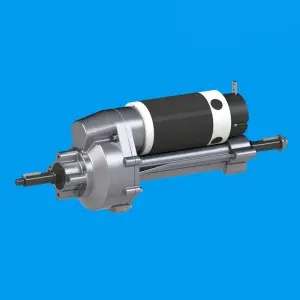Transaxle gears play a vital role in a vehicle’s performance and efficiency, especially in front-wheel drive and all-wheel drive systems. Knowing how to inspect these components is critical to maintaining your vehicle’s reliability and safety. In this article, we’ll take a closer look at the importance of transaxle gears, the inspection process, and what to look for during your evaluation.
Understanding transaxle gears
A transaxle combines the transmission and axle in a single unit, making the vehicle more compact in design. This system is particularly common in front-wheel drive vehicles, where the engine’s power is transmitted directly to the front wheels. The transaxle contains various gears that facilitate the transmission of power, allowing the vehicle to accelerate, decelerate, and maintain speed efficiently.
The importance of regular inspections
Periodic inspection of the transaxle gears is critical for several reasons:
- Preventive Maintenance: Catching wear and tear early can prevent costly repairs down the road. By checking your transaxle gears regularly, you can catch problems before they escalate.
- Safety: Transaxle failure may result in loss of control while driving, posing a major safety risk. Ensuring your gears are in good condition is critical to safe vehicle operation.
- Performance: Worn or damaged gears can affect your vehicle’s performance, resulting in poor acceleration, reduced fuel efficiency, and an overall unpleasant driving experience.
Checking process
When inspecting transaxle gears, a systematic approach must be followed to ensure no detail is missed. Here’s a step-by-step guide to help you through the process:
1. Gather necessary tools
Before you begin your inspection, gather the necessary tools, including:
- Jacks and jack stands
- Wrench set
- Torque wrench
- flashlight
- Magnifying glass (optional)
- Clean cloth for wiping components
2. Safety first
Always put safety first when working on your vehicle. Make sure the vehicle is parked on a flat surface, the parking brake engaged, and the vehicle firmly supported using jack stands.
3. Visual inspection
Start by visually inspecting the transaxle. Check the casing for signs of leaks, cracks or damage. Pay close attention to the following areas:
- Seals and Gaskets: Check for any fluid leakage around seals and gaskets. Leaks may indicate wear and may require replacement.
- Mounting Points: Check the mounting points for any signs of wear or damage. Loose or damaged mounts can cause misalignment and other problems.
4. Check the gears
Once the visual inspection is complete, it’s time to inspect the gear itself. Here’s what to look for:
- Wear Pattern: Check the gear teeth for any unusual wear patterns. Look for signs of pitting, chipping, or excessive wear, which may indicate that the gears are not meshing properly.
- SURFACE CONDITION: The gear surface should be smooth and free of any scratches or scratches. Any violations can impact performance and cause further damage.
- Alignment: Make sure the gears are properly aligned. Misalignment can cause excessive wear and lead to premature failure.
5. Check fluid level and condition
The fluid within the transaxle is critical for lubrication and cooling. Check fluid level and condition:
- Fluid Level: Check the fluid level using a dipstick or filler plug. Low fluid levels can lead to insufficient lubrication and overheating.
- Fluid Condition: Check the color and consistency of the fluid. Healthy transmission fluid is usually bright red in color. If the fluid is black or smells like burning, it may need to be replaced.
6. Listen for unusual noises
When checking the transaxle gears, listen for any unusual noises while the vehicle is running. Grinding, whining, or clunking sounds may indicate a problem with the gears or bearings. If you hear any of these noises, you must investigate further.
7. Consult a professional
If you notice any issues during the inspection, or are unsure about the condition of the transaxle gears, it is recommended to consult a professional mechanic. They have the expertise and tools needed to effectively diagnose and repair any problem.
in conclusion
Checking the transaxle gears is an important aspect of vehicle maintenance that should not be overlooked. By understanding the importance of these components and following a systematic inspection process, you can ensure that your vehicle remains safe and reliable. Regular inspections can help you catch potential problems early, saving you time and money in the long run. Remember, when in doubt, always seek help from a qualified professional to ensure your vehicle is running at its best.
Post time: Oct-18-2024


